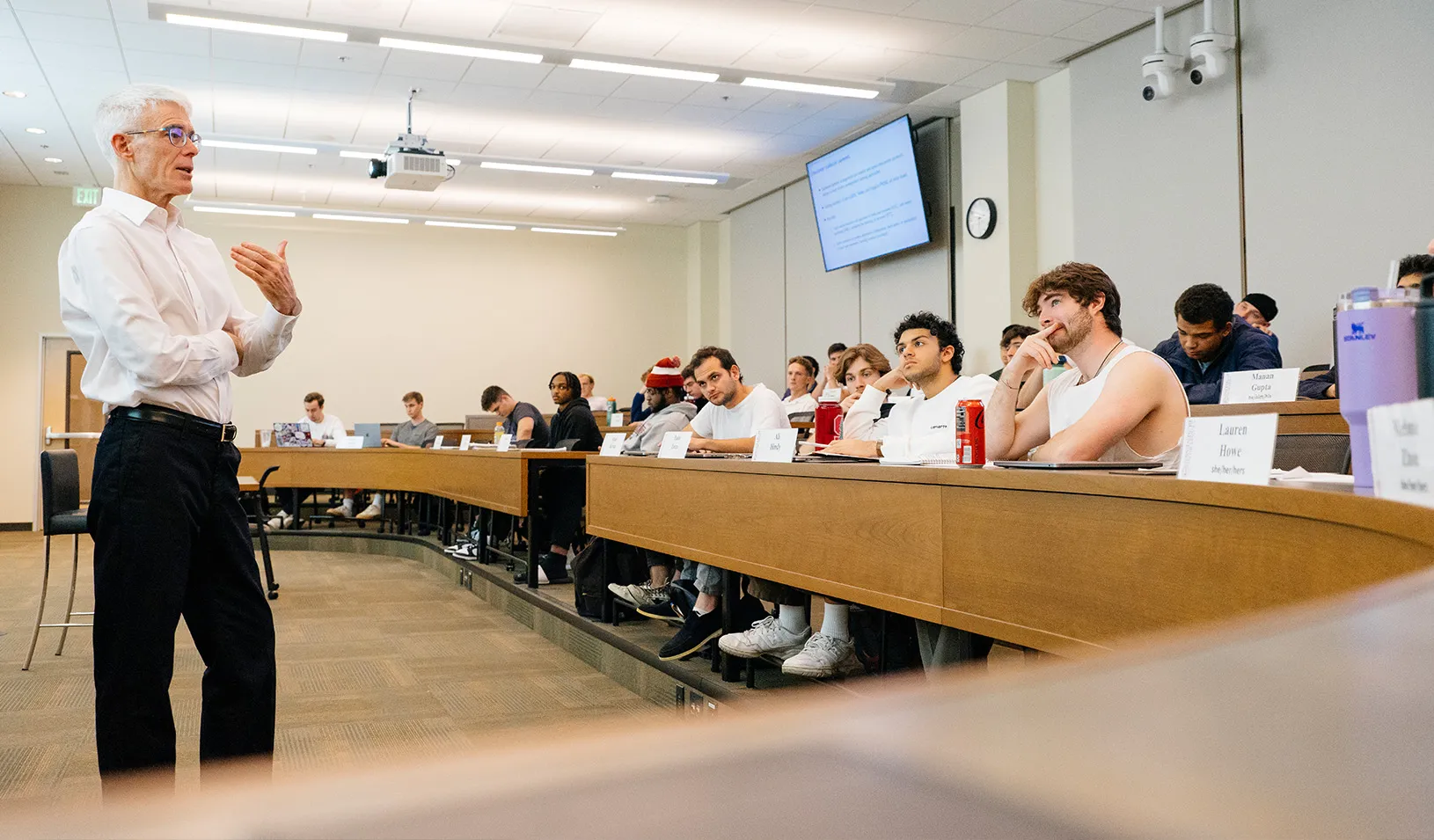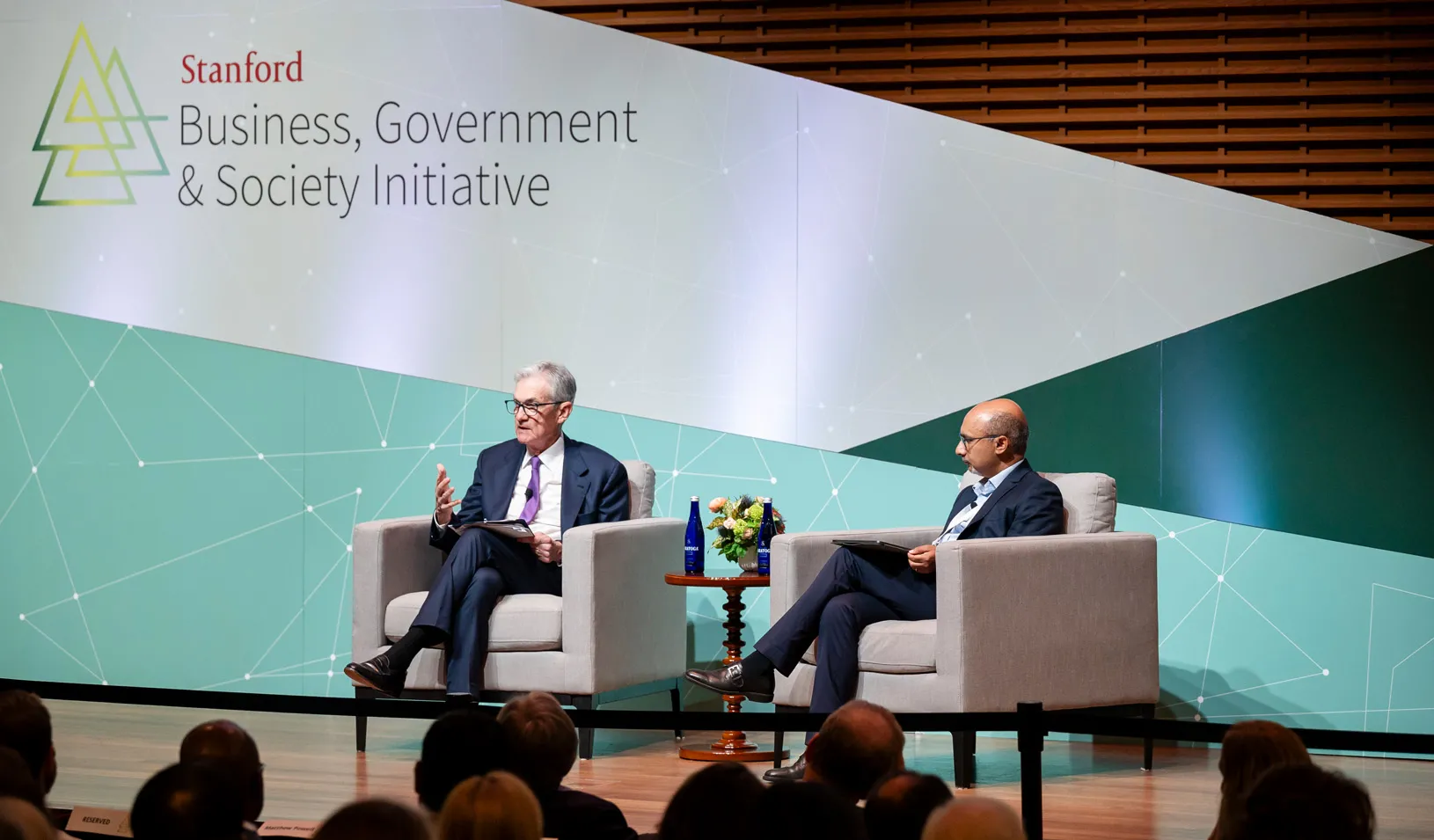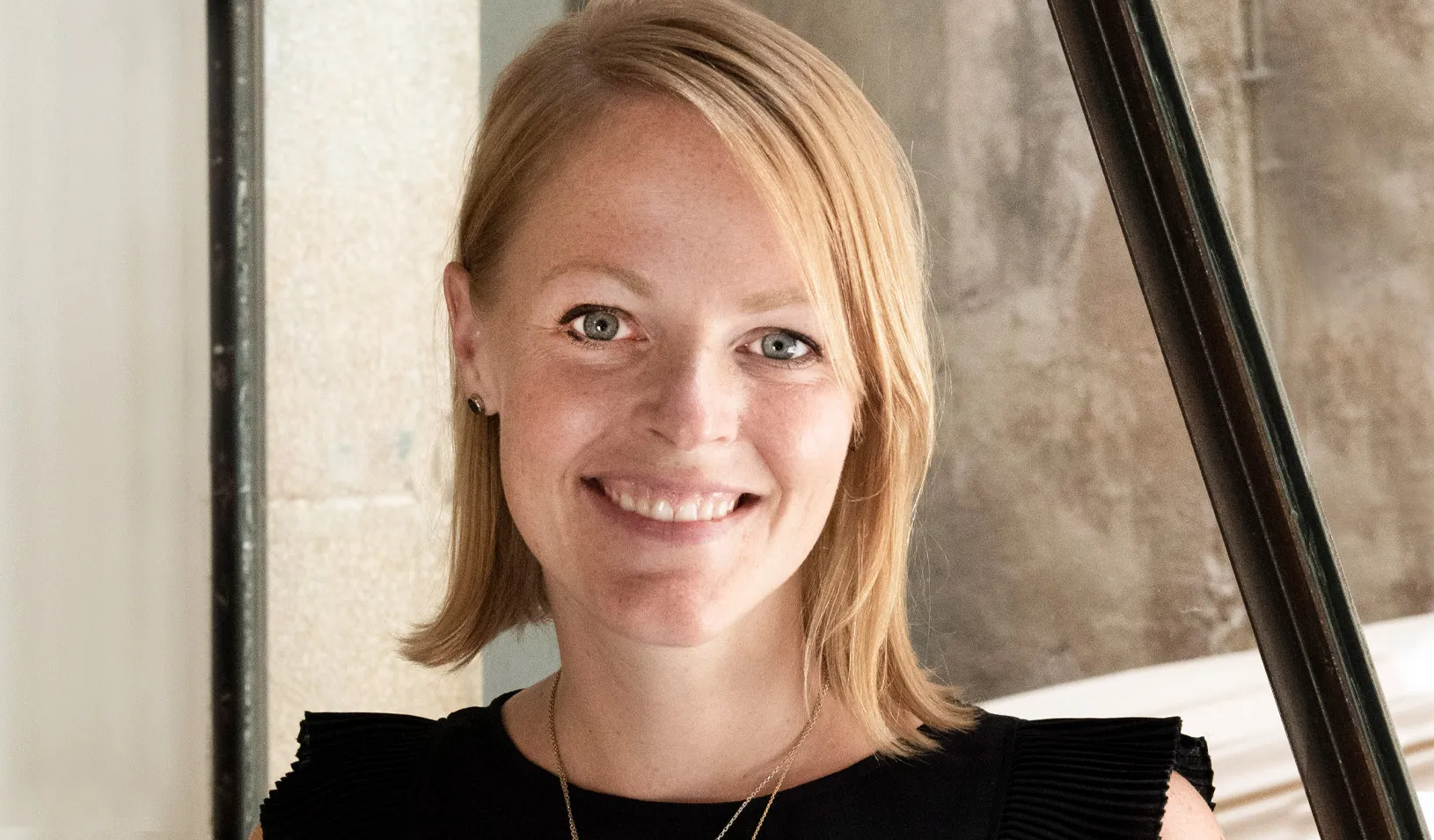From Virtual to Reality, Online LEAD Program Exceeded Expectations
As the Stanford LEAD Certificate: Corporate Innovation program enters its second year, it is challenging assumptions about the limitations of online education.
May 27, 2016
LEAD participant Cecilia Hultén (left) and her virtual teammates Ramesh Manga and Ann Farley finally met for the first time in the real world at a three-day gathering in April.
At a recent three-day gathering of about 100 executive education students, executives and managers greeted each other as warmly as long-time friends. Yet, none had ever shaken hands.
Students in the entirely online program forged such strong connections in the virtual classroom that they wanted to meet each other in person; so they organized a Stanford campus visit when the first cohort graduated in April.
“I realized an in-person meeting would enrich our learning and help build a lasting community,” said Cecilia Hultén, a senior manager at Nordea, the Swedish financial services group, and one of three organizers of the event. Hultén, who is Swedish and based in Copenhagen, spent nearly half the program in San Francisco.
The Virtual Experience Exceeded Expectations
The year-long online executive education program, whose name stands for “learn, engage, accelerate, and disrupt,” focuses on change and change management: how to lead innovation and change in an organization.
The goal in creating the program was to reach students who wanted something in between a short executive education course and a full-fledged MBA or master’s program, as well as those who can’t attend a residential program.
“We know there are many people who for a variety of reasons can’t come to campus,” said Peter M. DeMarzo, Mizuho Financial Group Professor at Stanford Graduate School of Business. “We wanted to create a way to reach out globally to business leaders who don’t have the opportunity to be here.”
Students come from large and small global companies, public institutions, and nonprofits. Applicants are selected based on their motivation for developing new products, services, cultural changes, or strategic pivots in their organizations.
The hope in creating the program was that students would form the same deep connections that are found in the one- and two-year programs where students are on campus. “We weren’t sure it was possible, but in the end it has far exceeded our expectations,” DeMarzo said.
How LEAD Works
Two cohorts of students are admitted per year, and they take eight courses over four quarters. Although most students finish the program in one year, they can choose to go at a slower pace and take up to two years to finish.
All students take three foundational courses: Financing Innovation: The Creation of Value; Critical Analytical Thinking; and Strategic Leadership. After that, they can choose from electives on topics ranging from design thinking to business model design.
The classes use a combination of discussion boards, team projects, and real-time discussions with faculty members to engage students. Most courses require students to submit work weekly, and courses generally include two live sessions with faculty members, held via videoconference or in a virtual reality environment — one of the cutting-edge technologies used in the program.
Course facilitators often schedule additional coaching time. The program uses these facilitators – often MBA graduates with 10 to 20 years of experience – to provide participants with meaningful feedback on their work, in addition to the comments they get from faculty members.
“Every course is slightly different – the faculty design the course based on the outcomes they want to achieve,” said Fernando Contreras, associate director for extended learning in the Graduate School of Business’s Executive Education Program.
So far about 255 people have enrolled in three cohorts, representing over 200 different companies. About half are in the United States and half are international. The program costs $16,000.
The course format, with participants all over the world working together on projects and moving through courses at the same time, has created “an environment of learning and community that no one expected,” Contreras said. “People have this pre-defined idea that engagement means sitting with someone face to face, or you’re sitting in a classroom and can hear people’s laughter. If you’re defining engagement by those metrics, by definition anything online will never be good enough.”
However, Contreras said it’s possible the connections formed in the LEAD program may be even more long lasting.
From Virtual to Real Connections
“What has evolved is not just a superficial gathering, but an actual struggle through a challenge with a team,” Contreras said. “That brings teams closer together.”
Hultén concurs. “It was great to meet my classmates in person. However, it felt like I already knew many of them,” she said. “I have to admit: many were more fun and better looking than their avatars.”
The program gets around some of the typical problems with executive education: Executives have limited time that they can spend away from work, and in-depth homework assignments aren’t possible. The LEAD program offers “a deeper level of learning than in traditional residential executive programs,” DeMarzo said.
A virtual team meets with lecturer Dan Klein. | Fernando Contreras
It also avoids a common problem with some forms of online education: It is essentially passive, with thousands of students reading or viewing material, but little interaction. The LEAD program offers students “much deeper engagement with the material, but also a transformative personal experience, really engaging with colleagues and with faculty,” DeMarzo said.
The program has also offered advantages over traditional residential programs. For example, students can learn about a concept, go back to work and try to implement it, and then return to class to report on what worked and what didn’t.
“I have taken courses in innovation before, but I was unable to execute the learnings as the Stanford LEAD program has allowed me,” said Lalaine Gedel, a current student. “The LEAD program increased my credibility to present and implement fresh ideas for new products, services, and trainings.”
This has benefits for the faculty as well as the students. “The faculty had deeper insight into how people were using the content and where they were struggling,” Contreras said. “They were seeing participants learn the material and then come back with questions: ‘In my industry or my company, here’s what I’m seeing.’”
The recent on-campus gathering may be seen by some as an indication that a program isn’t a success without face-to-face human contact, Contreras said. “But it’s quite the opposite: The gathering only came together because of what happened in the online space.”
“What surprised me most is the level of engagement by both LEAD students and faculty, which has been very rewarding,” said Hultén. “It’s been a truly global and immersive program.”
By Margaret Steen
For media inquiries, visit the Newsroom.
Explore More
Back to Class: Pathfinder

Business, Government, and Society Forum Looks at New Demands on Leadership

Erin Nixon Joins Stanford GSB as Assistant Dean of Admissions
